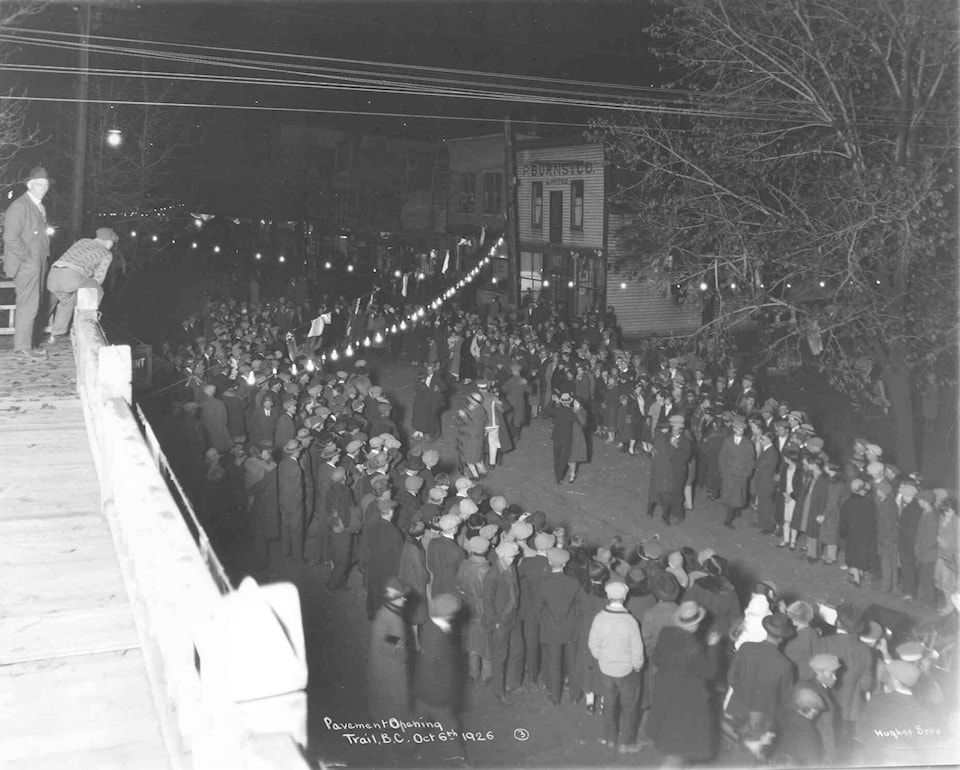On this exact October day in 1926, the streets of downtown Trail were filled with jubilant citizens ready to cut-a-rug on newly coated streets as they celebrated what was then, a very advanced and modern amenity — asphalt.
Trail archivist Addison Oberg says the huge dance party was held right on the fresh pavement.
“Trail was the first city in the Interior of British Columbia to have paved streets in its downtown core,” she explains.
At the start of October 96 years ago, right after pavers completed the job, the city centre was transformed.
“Lights were strung across the streets, a big band was playing, people hung out of balconies and everyone embraced the new change along with the changing of the seasons,” Oberg adds.
“Dancing is a good way to keep warm on a chilly October night!”
Infrastructure aside, Oberg shares an amusing detail of the roadwork.
“When the wooden plank sidewalks were being pulled up, children would follow behind the workers and find change that had slipped through the boards,” she said.
Canada started paving roads in 1915.
The country’s first asphalt paved roads were built in Ottawa, Ontario, and Edmonton, Jasper and Camrose, Alberta.
Engineered highways
Building roads in various parts of the province proceeded slowly during the early part of the 20th century and there was no cohesive system. It was impossible to cross the province by road and the only route into the central and northern interior was the Cariboo Road, very much in the same form in the 1920s as it had been in the 1800s.
For British Columbia, as for most parts of North America, the 1920s could be called the real start of the automobile age.
In 1920, there were 28,000 motor vehicles registered in British Columbia. By 1925, this had grown to 56,427. The total reached 98,938 in 1930 and stayed at that level until 1935.
At that point, automobile buying was further curtailed by the Depression.
In the 1930s, a fair amount of hard surface paving was done, but it didn’t keep pace with demand. Many long sections of major routes remained unpaved. Between 1939 and 1945, as vehicle registrations inched up to 135,000, little paving was done.
After 1945, increasing prosperity brought an explosive increase in automobile ownership and travel.
It was obvious that the standards of much of the trunk system were inadequate to meet the needs of modern automobiles, buses and trucks.
To read more from Frontier to Freeway; A short illustrated history of the roads in British Columbia visit: www.gov.bc.ca/th.
Read more: #Local History
newsroom@trailtimes.ca
Like us on Facebook and follow us on Twitter
